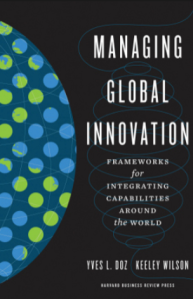There are so many books out there on innovation that it sometimes gets just hard to decide which to buy and read, to invest time into. I’ve got a growing stack of books sitting on my coffee table or in my e-reader file all shouting “read me, read me!”
 Well one I recently finished has been one of those rare books that got the Paul Hobcraft treatment; considerable underlining, scribbles in the margins, circles around some pages that I want to refer back too as quickly as I can. You can never achieve that same sense of ‘ownership’ and possession through the e-reader can you, or am I missing something there?
Well one I recently finished has been one of those rare books that got the Paul Hobcraft treatment; considerable underlining, scribbles in the margins, circles around some pages that I want to refer back too as quickly as I can. You can never achieve that same sense of ‘ownership’ and possession through the e-reader can you, or am I missing something there?
So the book that joined that elite pantheon to the innovation gods on my top shelf was one written by Yves Doz and Keeley Wilson entitled “Managing Global Innovation – frameworks for integrating capabilities around the World”, printed by Harvard Business Review Press. I really recommend it.
The Key to bridging your Global Innovation Gap
The book is all about providing the understanding of integrating your global resources to build and leverage a global innovation network. I think it does a good job in explaining the different parts, the considerations and the tougher aspects of making this work for you.
Ok, I’m a sucker when it starts off by discussing the innovation challenges, then starts climbing into chapters on optimizing the innovation footprint, then communications, receptivity and then how to organize for global projects focusing on collaborative and integrated innovation, it does draw you in.
I’ll leave you to explore this in your own time, if global innovation and integrating is your bag. Equally I think it will be more than helpful in thinking this fully through or recognizing gaps within your present operations.
What the book does for me
Read more






